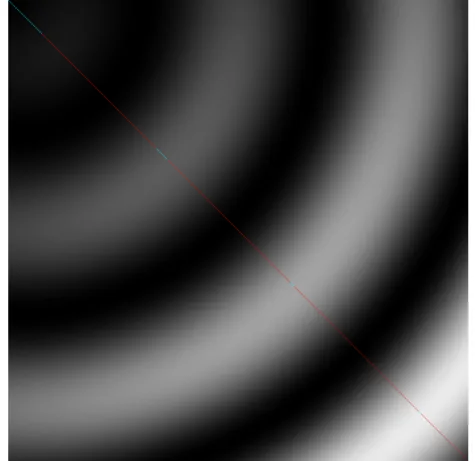Prof. G. Zachmann
Christoph Schr¨oder (schroeder.c@cs.uni-bremen.de)
University of Bremen School of Computer Science
CGVR Group September 17, 2020
Summer Semester 2020
Assignment on Massively Parallel Algorithms - Sheet 4
Due Date
Exercise 1 (Segmented Scan, 2 Credits)
Assume you are given an input vector with frags array (head-tail flags). Assume further that all segments have a power-of-2 length (not necessarily the same lengths).
Describe how you can modify the standard scan algorithm so that it computes the segmented scan (segmented prefix-sum). You can start with either Hillis-Steele or Blelloch, but we find it easier to describe using Blelloch’s algorithm.
Note that you can describe your modifications as a sequential algorithm. Also note, that you don’t have to write pseudo-code, a clear description suffices. But your algorithm must contain at least parts of the standard scan algorithm.
Exercise 2 (Line of sight using max scan operation, 5 Credits)
The given framework LineOfSightgenerates two image files "height_field_{cpu,gpu}.bmp". In the images, an arbitrary height map, generated by a sine function, is plotted. From the top left corner to the button right corner, a line color codes the visibility along that ray. The visibility is computed using theLine of Sightconcept presented in the lecture. Blue color represents the points that are visible and red color represents points that are not visible in the view direction (line of sight ray), see Figure 1.
Hint: Please note that in the above framework, for simplicity, only a single block with dimension:
max threads, supported by the respective device is launched. (usually powers of 2) Your tasks are as follows:
a) Implement a kernel for the inclusive max scan operation using theHillis Steele Algorithm (single block version) as presented in the lecture.
b) Implement two kernels (one for up sweep and other for down sweep) for inclusive max scan operation usingBlelloch Algorithm(single block version)
Hints:
i) Note that the Blelloch Algorithmperforms exclusive scan operation. Please perform ap- propriate modifications to generate the inclusive max scan result.
ii) Use the utility functions provided in the framework to computing angles from height and to calculate the location of the point on a ray in both tasksaandb.
iii) The expected output image is shown in Figure 1.
c) Compare runtimes between the above two implementations (aandb) and provide arguments for the differences/similarities between run times for these two implementations.
1
Figure 1: Height Field bitmap with a colored line of sight. Blue colored points are visible and red points are non-visible points.
2
